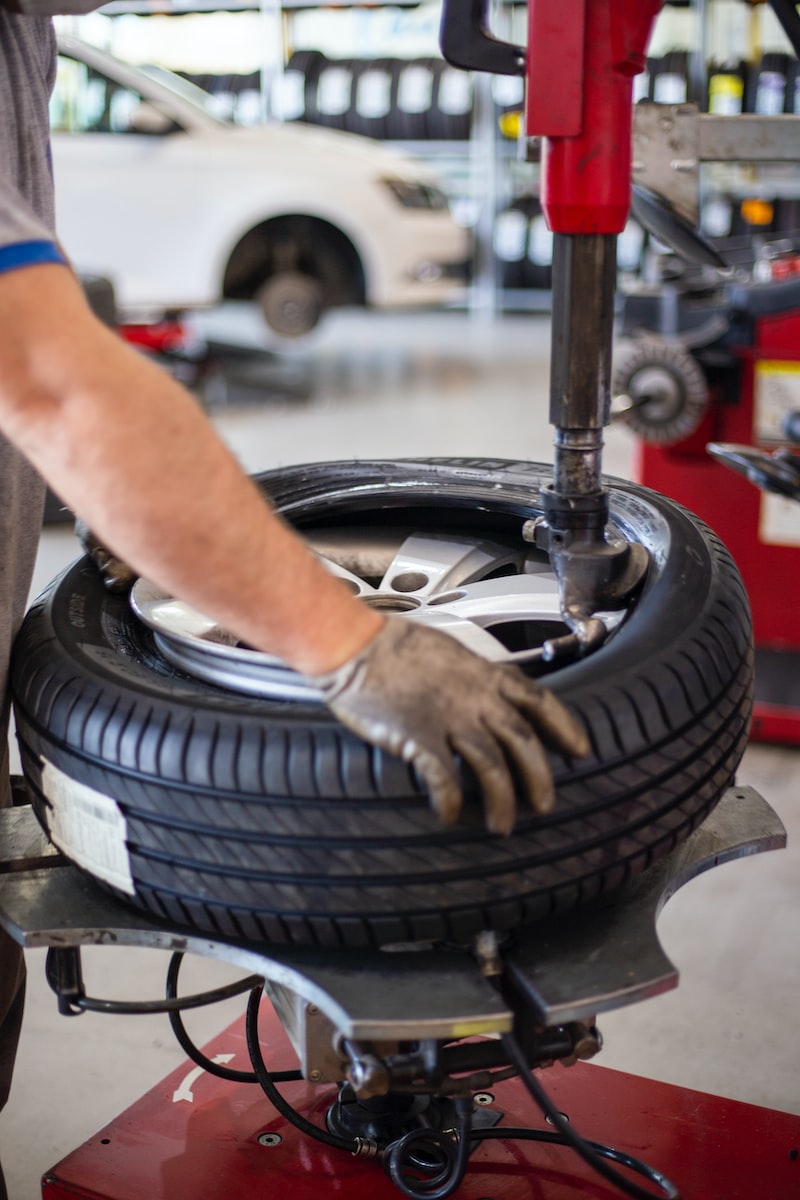You may have seen them and wondered, what are those hairs on my tires for? You’re not alone. While it’s not a commonly asked question, there are a few reasons why these little rubber hairs exist on the sidewalls of tires.
In this article, we’ll take a closer look at what these hairs are for and what you can do if they start to wear down.
What are the Little Hairs on Tires For?

There are a lot of myths and misconceptions about the hairs on car tires. Some people think they’re there to enhance traction in wet conditions, while others believe that they help to slow the car down.
The truth is that the hairs on car tires serve two main purposes: They provide traction and they help to regulate air pressure. When you’re driving on a wet surface, the hairs on the tires help to create friction and grip the road. This gives you more control over the car and prevents it from slipping.
The hairs also play a role in regulating air pressure. As the car moves, the hairs rub against the tire and create friction. This helps to create an air seal between the tire and the rim, which prevents air from escaping.
Why Tires Have Hair?
The hairs on your tires are there for a specific purpose: to improve your car’s performance.
They work by creating turbulence as the car moves, which helps to create more contact between the tire and the road. This, in turn, gives you better traction and prevents the car from slipping.
The hairs also help to distribute pressure evenly across the tire, which keeps it in better contact with the road and improves braking performance.
How Are Hairs on Tires Made?
The hairs on tires are made of a rubbery, synthetic polymer called polydimethylsiloxane (PDMS). It’s the same material that’s found in contact lenses, sealants, caulks and other silicone products.
The individual hairs on a tire are very small—only about 0.004 inches in diameter. But there are millions of them, and they’re strategically placed to do two important things: increase traction and help cool the tire.
Traction is key when you’re driving, especially if you’re taking off or braking on a wet surface. The hairs on the tires create tiny air pockets that give the tire more surface area to grip the road. This helps prevent slipping and skidding, and it makes your car easier to handle in bad weather conditions.
The hairs also help cool the tire. When the car is moving, air flows over the tires and cools them down. The hairs increase this airflow, which helps the tires stay cooler under heavy loads or in hot weather conditions.
How Can You Inspect a Tire for Hair Presence?

If you’re not sure whether or not your tires have hair on them, there’s a simple way to check. Just run your hand along the surface of the tire. If you feel any hairs, then they’re probably present.
Alternatively, you can use a flashlight to inspect the tire. Hold the tire at an angle so that the light shines on the surface. If you see any hairs, they’re probably present.
If you’re still not sure, you can always take the tire to a mechanic or a tire shop and they’ll be able to tell you for sure.
How Do You Replace the Hairs on Tires?
If the hairs on your tires are worn down, you’ll need to replace them. You can do this yourself or take it to a professional, but it’s a pretty simple process.
Here’s what you’ll need to do:
- Use a utility knife to cut the old hairs out of the tire. Be careful not to cut yourself!
- Clean the area around the tire with rubbing alcohol. This will help the new hairs adhere better.
- Apply a bead of glue around the tire.
- Place the new hairs in the glue and press them down.
- Let the glue dry for 24 hours before driving on the tire.
Tips for Maintaining Your Car’s Tires with Hairs
Here are some tips for making sure your car’s tires with hairs stay in good condition:
- Inspect your tires regularly for any signs of wear and tear, and replace them when necessary.
- Keep your tires inflated to the proper pressure.
- Avoid driving on rough or uneven surfaces whenever possible.
- When driving in wet or snowy conditions, take extra care to avoid puddles and slippery spots.
- Get your tires rotated and balanced regularly to ensure even wear.
Should You Replace the Hairs on Your Tires?
The answer to this question really depends on the condition of your tires. If they’re in good shape, then you probably don’t need to worry about replacing the hairs.
But if your tires are looking a bit worse for wear, then it might be a good idea to get new ones. The hairs on your tires play an important role in keeping them inflated, so if they’re damaged, it could lead to a blowout.
And no one wants that.
So, if you’re not sure whether or not you should replace the hairs on your tires, it’s best to err on the side of caution and get new ones. Trust me, it’s not worth taking the risk.
Signs That You Need to Replace the Hair-Like Fibers on Your Tires

If you’re unsure about when to replace the hair-like fibers on your tires, there are a few signs to look out for.
For one, if you start to see cracks or fraying in the fibers, that’s a sign that they need to be replaced.
Another sign is if the fibers are coming off of the tire in chunks or pieces.
You’ll also want to replace the fibers if they’re no longer doing their job of providing traction. This is usually pretty easy to tell, as you’ll likely feel a difference when driving on snow or ice.
Finally, if it’s been a while since you’ve replaced the fibers, it’s probably time to do so. A general rule of thumb is to replace them every 10,000 miles or so.
Maintenance Tips for Maintaining and Replacing Tire Hairs
Assuming you want to keep your tire hairs in good condition (and you should, since they play an important role in keeping you safe on the road), there are a few maintenance tips you should keep in mind.
First, make sure you check your tire pressure regularly. If the pressure is too low, it can cause the tires to wear out faster. Second, get your tires rotated every 5,000 miles or so. This helps ensure even wear and tear and can help extend the life of your tires.
And last but not least, don’t forget to get your tire hairs trimmed every now and then! Just like with your hair, split ends can happen, and if they’re not taken care of they can cause serious damage. So if you see any fraying or split ends, be sure to take care of them right away.
Different Types of Tire Hairs
Now that we’ve gone over what tire hairs are and what they do, let’s talk about the different types of tire hairs.
- The first type is made of steel wire and is used on radial tires.
- The second type is made of nylon or Kevlar and is used on bias-ply tires.
- The third type is made of carbon fiber and is used on low-profile tires.
So, now that you know a little bit more about tire hairs, you can go out and buy a set for your car. And if you’re ever wondering what those strange-looking things are on the side of the road, you’ll know that they’re just tires that have lost their hair.
Best Practices for Taking Care of Your Tires

Now that you know what those hairs on your tires are for, it’s important to know how to take care of your tires so they can take care of you. Here are some best practices:
- Check your tire pressure regularly. This will help ensure that your tires are properly inflated, which will in turn help improve your gas mileage and extend the life of your tires.
- Don’t overload your vehicle. The weight of your vehicle puts extra strain on your tires, so it’s important not to overload them.
- Avoid driving on rough roads. Potholes, speed bumps, and other obstacles can damage your tires, so it’s best to avoid them if possible.
- Have your tires rotated and balanced. This helps distribute the wear and tear evenly across all four tires, which will help them last longer.
By following these best practices, you can help ensure that your tires are in good shape and can last for many miles to come.
Frequently Asked Questions:
What are the “hairs” on tires, and why do they exist?
The “hairs” on tires are actually called tire sipes or siping. They are small, thin slits or cuts in the tire tread pattern designed to enhance traction, stability, and performance in various road conditions.
How do tire sipes improve traction and stability?
Tire sipes create additional biting edges on the tire’s surface, which helps improve grip on the road. They allow the tire to better conform to the road surface, increasing traction in wet, snowy, or icy conditions and enhancing overall stability.
In what types of road conditions are tire sipes most beneficial?
Tire sipes are most beneficial in wet, snowy, icy, or slippery road conditions. They help channel water, snow, and slush away from the tire’s contact patch, reducing the risk of hydroplaning and enhancing grip.
Do all tires have sipes, or are they found on specific types of tires?
Sipes are found on a wide range of tires, including all-season, winter, and some performance tires. They are especially common on tires designed for adverse weather conditions.
Can siped tires be used year-round, or are they primarily for winter driving?
Siped tires can be used year-round, depending on the specific tire type and the climate in your region. All-season tires with siping are suitable for various conditions, while winter tires typically have more aggressive siping for cold and snowy weather.
Conclusion
All in all, it’s pretty clear that the hairs on tires serve a very important function. While they may seem like a minor detail, they play a critical role in keeping drivers safe on the road. So, the next time you’re out for a drive, take a moment to appreciate the hairs on your tires–and be sure to thank them for all they do!




